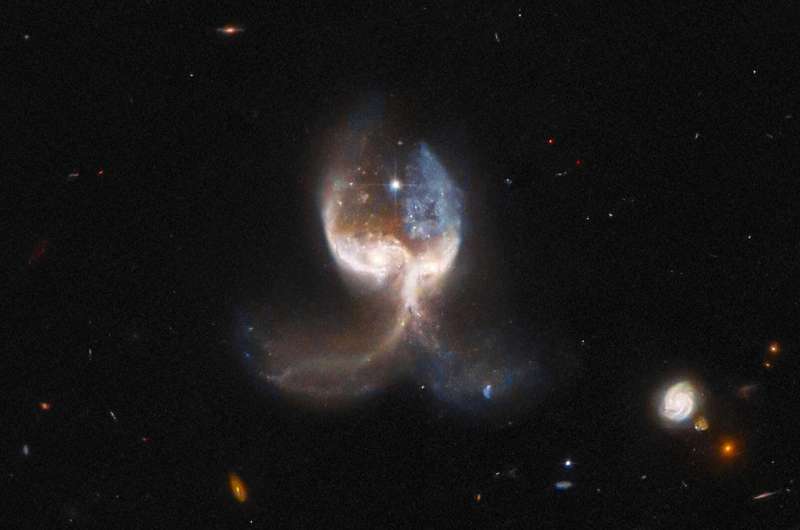Hubble explores galactic wings

This image from the NASA/ESA Hubble Space Telescope features two merging galaxies in the VV-689 system, nicknamed the Angel Wing. Unlike chance alignments of galaxies, which only appear to overlap when viewed from our vantage point on Earth, the two galaxies in VV-689 are in the midst of a collision. The galactic interaction has left the VV-689 system almost completely symmetrical, giving the impression of a vast set of galactic wings.
The angelic image comes from a set of Hubble observations that took a closer look at "Zoo Gems," interesting galaxies from the Galaxy Zoo citizen science project. This crowdsourced program relies on hundreds of thousands of volunteers to classify galaxies and help astronomers wade through a deluge of data from robotic telescopes. In the process, volunteers discovered a gallery of weird and wonderful galaxy types, some not previously studied. A similar, project called Radio Galaxy Zoo: LOFAR is using the same crowdsourcing approach to locate supermassive black holes in distant galaxies.
Hubble's Advanced Camera for Surveys took detailed follow-up observations of noteworthy objects from both projects. In keeping with Galaxy Zoo's crowdsourced nature, the public cast 18,000 votes to choose targets for follow-up Hubble observations. The selected targets include ring-shaped galaxies, unusual spirals, and a striking selection of galaxy mergers such as VV-689.
Provided by NASA's Goddard Space Flight Center


















